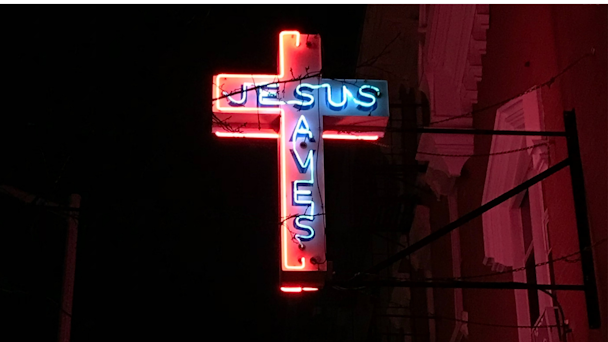The triumph of the cross: how religions rule at visual identity
To understand the power of visual identity, look no further than the great religions. Ibis Ideas’s Nick Jefferson explains why the cross and other symbols have endured and what brands can learn from them.

The cross is the enduring symbol of Christianity
Today is ‘Holy Cross Day’, when millions of Christians all over the world will take a moment or two to reflect on what they consider to be Jesus’s sacrifice: the ‘triumph of the cross’.
I’m not a Christian. Hell, I don’t even believe in God. But I do believe in the power of visual identity. And so, despite myself, as a marketer I can’t help but admire the religions. Here’s why.
The ‘limbic brain’ (our ancient ‘paleo-mammalian cortex’, the part that deals with emotion) is responsible for much more decision making than we care to think. But that limbic brain has absolutely zero capacity for verbal language, meaning that every human’s first language is visual.
The great religions understand this innately, and have used it to huge hegemonic advantage over centuries. Those of us who work on brands have a lot to learn from them.
Consider the sophistication with which religions imbue simple symbols with deep, and often multi-faceted, complex meaning. Take Taoism’s apparently effortless, but hugely profound, yin and yang. Or the cosmically holistic significance of Hinduism’s representation of Shiva, the Lord of the Dance. Or the exquisite majesty of a well-composed Jewish Seder plate. Meanwhile, every mosque on the planet contains a ‘niche’ – reminding the faithful of the direction of Mecca, the birthplace of the religion’s founder.
And then there’s the symbol of today’s Christian reflection – the cross. Originally inspired by the ancient Egyptian ‘ankh’, the hieroglyph for life itself, the Christian cross pulls off an incredible trick in terms of the amount of data communicated through such a simple shape. On the one hand, we have the obvious sacrifice ‘for our sins’. But then we also have the reminder of the world’s best ever comeback, and the offer of everlasting life for believers too. At the same time, the three points across the top of the cross make sure we don’t forget the importance of the holy trinity – father, son and ghost.
You don’t need to bother God very often (or even at all) in order to appreciate the redacted, nuanced brilliance of the Christian cross – nor the fact that it’s all neatly packaged in one infinitely reproducible shape. Pure genius. It’s no wonder that this particular religion ‘went viral’. The ‘Greatest Story Ever Told’ surely owes at least as much to its countless ‘strategists’ and ‘art directors’ over the years as it does to the original copywriters.
The truth is that any human entity that is designed to exist – and to last – beyond the self requires something that people can ‘see’. Religions understood and continue to understand this, and have used it very successfully to help persuade billions of the existence of things that are, at best, unproveable.
Now that really is a triumph.
Nick Jefferson is strategic consultant at Ibis Ideas, the creative consultancy.
